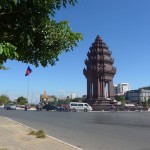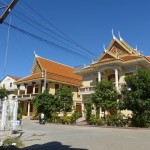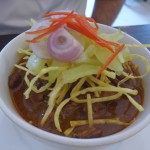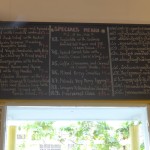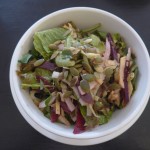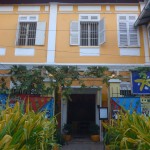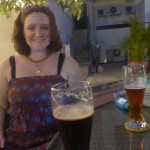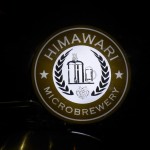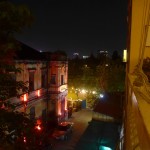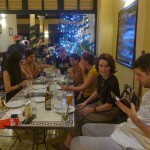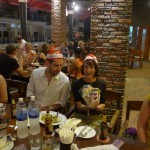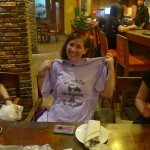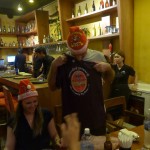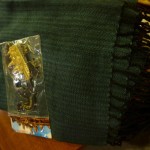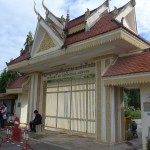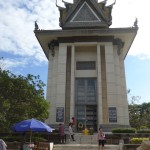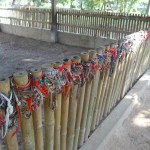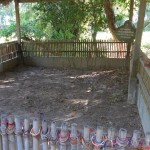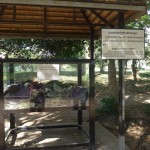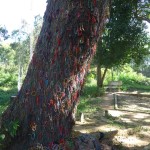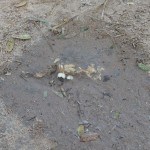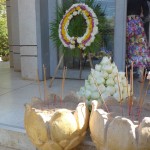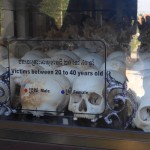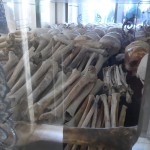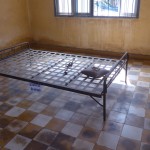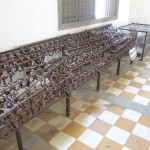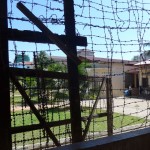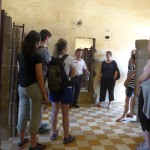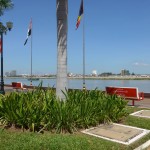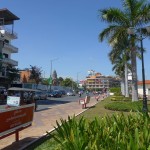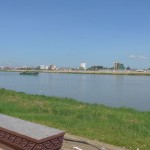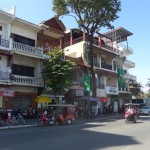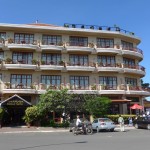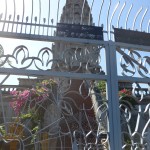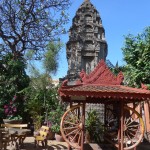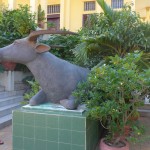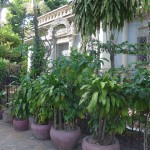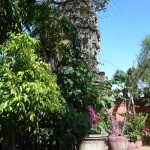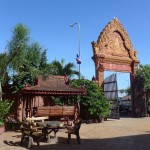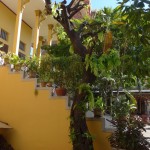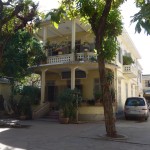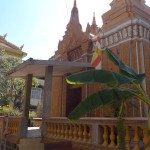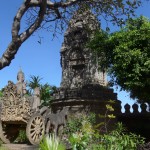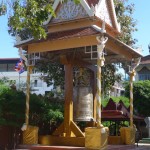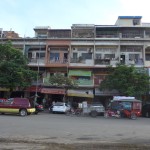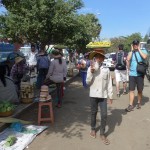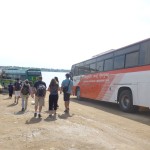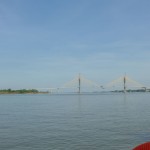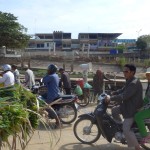 Once we arrived in Pnomh Penh from our homestay, we all ran for the showers in our hotel. This was by far the lowest quality hotel of our trip. It was small, dark and the shower was in the same space as the rest of the bathroom, meaning the floor was always wet and gross. Nonetheless, the shower had Sean and I feeling refreshed and we ventured out on our own to a lunch place Dyka recommended that was only a ten minute walk away. Famous last words…
Once we arrived in Pnomh Penh from our homestay, we all ran for the showers in our hotel. This was by far the lowest quality hotel of our trip. It was small, dark and the shower was in the same space as the rest of the bathroom, meaning the floor was always wet and gross. Nonetheless, the shower had Sean and I feeling refreshed and we ventured out on our own to a lunch place Dyka recommended that was only a ten minute walk away. Famous last words…
25 minutes later, having passed major sights of the capital including the National Monument, the National Palace, and the National Museum, we were exhausted and drenched in sweat. It was so hot that we barely enjoyed what we were seeing. Pnomh Penh is the hottest place I’ve ever been in my life – an honor that was previously held by Aqaba, Jordan. On our scorching stroll, we learned that Dyka’s idea of a “ten minute walk” is really 25-30 minutes and that no one in Pnomh Penh walks – they all ride scooters or motorbikes. We also learned that we needed to get around via tuk-tuk. At $2 per trip, it was more than affordable for us and would let us enjoy much more of the city.
Friends the Restaurant was an oasis. Bright, cheerful and with an inventive menu it instantly had us relaxing and laughing. I ordered a coconut and lychee smoothie that really hit the spot.

The restaurant is part of the TREE Alliance group of restaurants that help at-risk youth by training them in service and cooking jobs. Their sister restaurant, Romdeng, was featured in the NY Times and on our agenda for dinner the next night. Sean had an Asian mango slaw (pictured below) and a Burmese chicken curry. I had a beet and bamboo salad, and a chicken burger with a cranberry and orange relish. Everything was top-quality and very fresh.
After a stroll through their craft and gift shop next door and a quick polish change on my nails at their nail bar, we took a tuk tuk back to the hotel to get ready for our Christmas evening. I had read about a small microbrewery in a downtown hotel, so we headed there for a pre-dinner drink. It was harder to find than we had anticipated, so we were again pretty sweaty when we arrived, but it made the beer taste that much better.
We sat outside Himawari Brewery on the river walk and sipped on our first beers of the trip that were not light lagers. YES.

We had thought some of our group might come to join us, but they hadn’t arrived by the time we finished our beers, so we headed over to the FCC (Foreign Correspondents Club). It was a general meeting place and quite popular, with three levels including a terrace-level with a big bar and great views of the river. We spotted our group and joined in on the happy hour fun.
Our dinner spot was just across the street. Dyka had reserved a large table for us and we all donned our silly Santa hats. The menu was a mix of Western and Cambodian food – Sean opted for a fish and rice dish and I decided I’d had too much rice and needed a break. So I ordered a pizza. Don’t judge me.
We all placed our White Elephant gifts in the middle of the table. The budget was $2, so we all really had to haggle to get a nice, souvenir-like gift for that price. I brought a bar of local soap I got at a boutique in Siem Reap and Sean brought a set of chopsticks made from local mahogany.
Sean was, of course, the MC for the event and kept the gift exchange moving in addition to announcing the gifts and passing judgement for all to hear. Our Australian friends called him “Papa Sean” for the night.
Sean got a magnet/bottle opener in the shape of an elephant and ornately decorated, while I ended up with a beautiful emerald-green scarf that Dyka had brought from his wife’s shop. I’m pretty sure that was more than $2, but I’m not complaining. 😉 T-shirts, a hammock and a puppet were some other interesting and fun items that were shared.

After dinner, Sean and I went with Caroline and Mark (our friends from Ireland who were living in Hong Kong), Sarah (from Canada, based in London, living in Dubai) and Daniel (American, living in Florida, but was in the military so had been everywhere) to an outdoor cafe for another round of drinks, and a few more laughs and stories. It was my first time being away from home on Christmas and I have to say that we had a great time and made wonderful memories! I could see traveling at Christmas becoming a regular thing…
After a rough night of sleep thanks for a very uncomfortable mattress (we had springs digging in our backs all night), we got up early to start our day at The Choeung Ek Killing Fields. We had a local guide join our group to take us around here and then to the Tuol Sleng Genocide Museum and he was amazing. Somber, full of intensity, and an animated and passionate story teller, we could not have had a better person take us through these sad and haunting places.
I’m planning to write an entire post about my experience here, so I won’t go into too much detail. From 1975-1979 – just four years – Pol Pot killed 1.7 million of the 7 million people in his country through torture and mass killings. Another 1 million died of disease and starvation. There are over 30 of these Killing Fields monuments around the country and the government has given up trying to excavate every grave – they simply don’t have the resources and there are too many.
When we were walking around the graves and the grounds, there were bone fragments showing through the dirt everywhere. It was difficult to not step on bones. 
These posts surrounded many of the mass graves that had been uncovered and the Khmer people believe the souls of the dead here are not at rest. They leave bracelets as offerings and gifts for those souls.

Inside the structure are skulls and other bones, with colored stickers to indicate gender and age. There are also weapons – the Khmer Rouge and Pol Pot believed these people not worthy of the cost of bullets, so they would blindfold them, force them onto their knees and use a variety of weapons like axes, hammers, shovels, etc. to kill them. The prisoners would then fall into the mass graves and the soldiers would walk over the bodies, killing those still alive. Because the graves took time to fill up and because decaying bodies smell, lye was dumped over the bodies. This covered up the smell and also burned and disintegrated the bodies.
Once at the genocide museum, we were told in gruesome detail about the ways in which the people here were tortured. This former school was turned into a prison when Pol Pot came to power, but it was called a “Re-Education Center” to keep the true goings-on under wraps. People came here to be “educated” into Communism and Pol Pot’s regime. It began with all the soldiers and government workers under the former regime.
Then they targeted all educated people – doctors, lawyers, teachers, painters, engineers, etc. They were brought here – men, women and children – and forced to give information. Usually, the information was names of other people like their neighbors, coworkers and friends. If they refused to give any information, they were tortured until they died. If they gave information, they were sent to the “new house” – aka The Killing Fields.
We were all pretty upset and emotional, and I just couldn’t shake the feeling that there may truly be no hope for us humans. We destroy each other, and we elect and support and idolize sociopaths and psychopaths who destroy us. Why do we do these things to one another?

Our local guide, taking us through the former prison cells.
Our guide told us that Cambodia is still a very fragile place, with all Khmer Rouge soldiers having been granted not only amnesty, but also good jobs in the new government and free housing. Certainly done to stop the cycle of violence, he said, but the Cambodian people were still deeply hurt by it and suspicious of these people who had committed such horrific crimes against their own people.
When planning this trip, many people told me how happy Cambodians are despite what has happened to them. I don’t really agree with that. I sensed a reservedness and a weariness from many people I met and encountered, and after what I learned, it makes sense. And I hope it gets better for them.
For all of America’s problems, I did feel this day that we were quite lucky to have been born there.
We continued on with our day and rode back into the downtown area with our group. Once we arrived at the river walk, Sean and I split off for lunch on our own.

We went to an Indian restaurant and had a beautiful (and HUGE) tahlis, mine with chicken and Sean’s with mutton.

We walked around a nearby temple complex after lunch and it was very beautiful. So many unique buildings, statues, plants, trees all within the temple walls.


I was starting to feel a little queasy and suspected either the food or the heat or some combination. We went back to the hotel for a rest and to check out the rooftop swimming pool and sweeping city views. This was the only nice part of our hotel and we enjoyed it up there.

And that was it for me in Pnomh Penh. Food poisoning took me out for the entire evening, starting at about 4pm. It was definitely the chicken, since that is the only thing I had that Sean didn’t. I hadn’t been sick at all from any of the local food – it was under-cooked chicken that did me in. Ugh.
We missed our dinner at Romdeng and Sean walked down the street for dinner at a nearby cafe – opting for chicken wings and french fries. I guess he’d also had enough adventurous eating for the moment. My sickness subsided about 9pm, but I was completely exhausted, sore and dehydrated. Sean made me feel better by pointing out that I had had a full day before I got sick – the tours in the morning, the river walk, lunch, the temple, tuk tuk ride and the hotel pool. I guess it really could have been much worse. And our friends from Ireland went to Romdeng for dinner – I was glad someone got to go and support the restaurant and its great cause!
The next morning, I focused on drinking lots of fluids and just taking it easy – which wasn’t hard to do since we had a long day of travel on the bus. I was ready to get out of Pnomh Penh. The heat, the dirtiness/dustiness of everything, the shabby hotel, and my food poisoning had me over the whole place. Off to Vietnam, we go!
We had to get on a ferry to cross a river on our way to Vietnam. There was no bridge to get across – only the boats! They had finally built a bridge but it was not yet open.
Dyka had us all get off the bus for safety reasons – there have been tragedies where people have died when ferrys have sank – and walk onto the boat. He carried life jackets for each of us.
As soon as we got off the bus, we were bombarded with locals trying to sell all sorts of different food – from dried fishes (that were, quite literally, being dried in the sun on a rock) to fresh fruits and everything in between. It was a little overwhelming.

We made it safely across the river and got to see the new bridge – it’s behind us in this picture.
The motorbikes all piled onto the ferry last – so many!
From motorbikes, to buses, to pedestrians, to carts drawn by donkeys hauling bamboo – this ferry had it all!
While we were not so happy about another long travel day, this ferry ride was quite an experience and one we won’t soon forget. Definitely the kind of thing we would miss if we were flying between each city. Next up: our time in Vietnam kicks off in Ho Chi Minh City.


